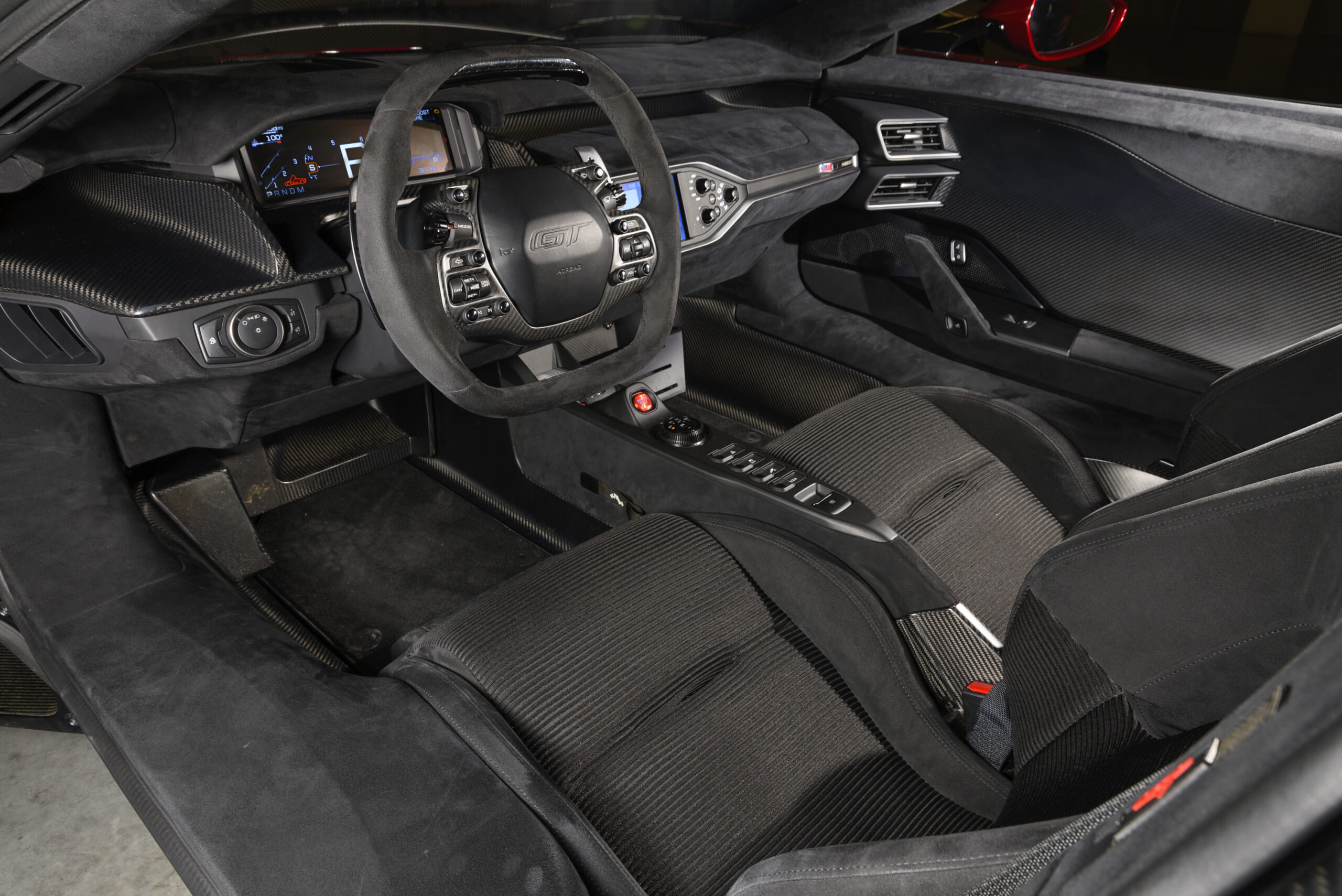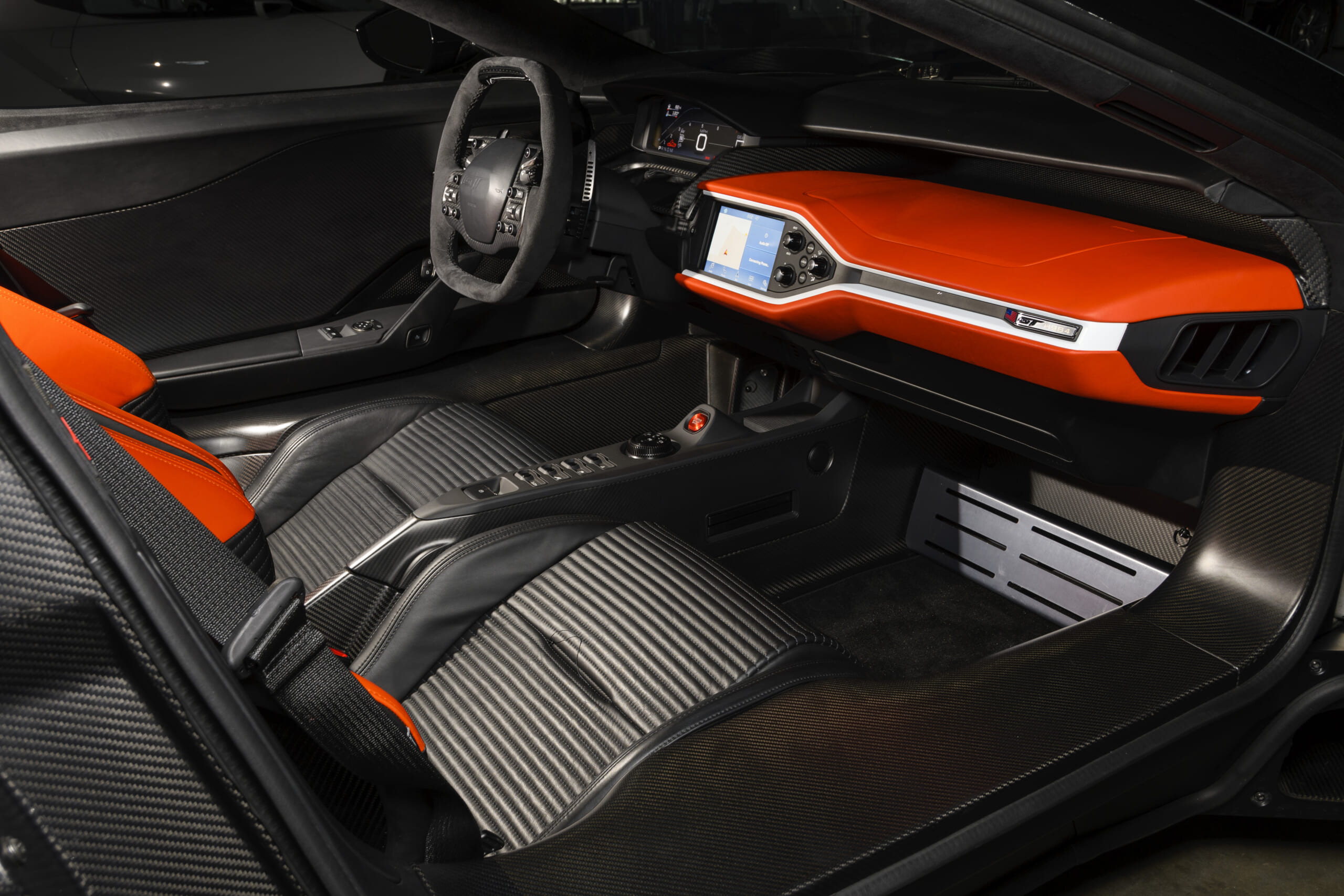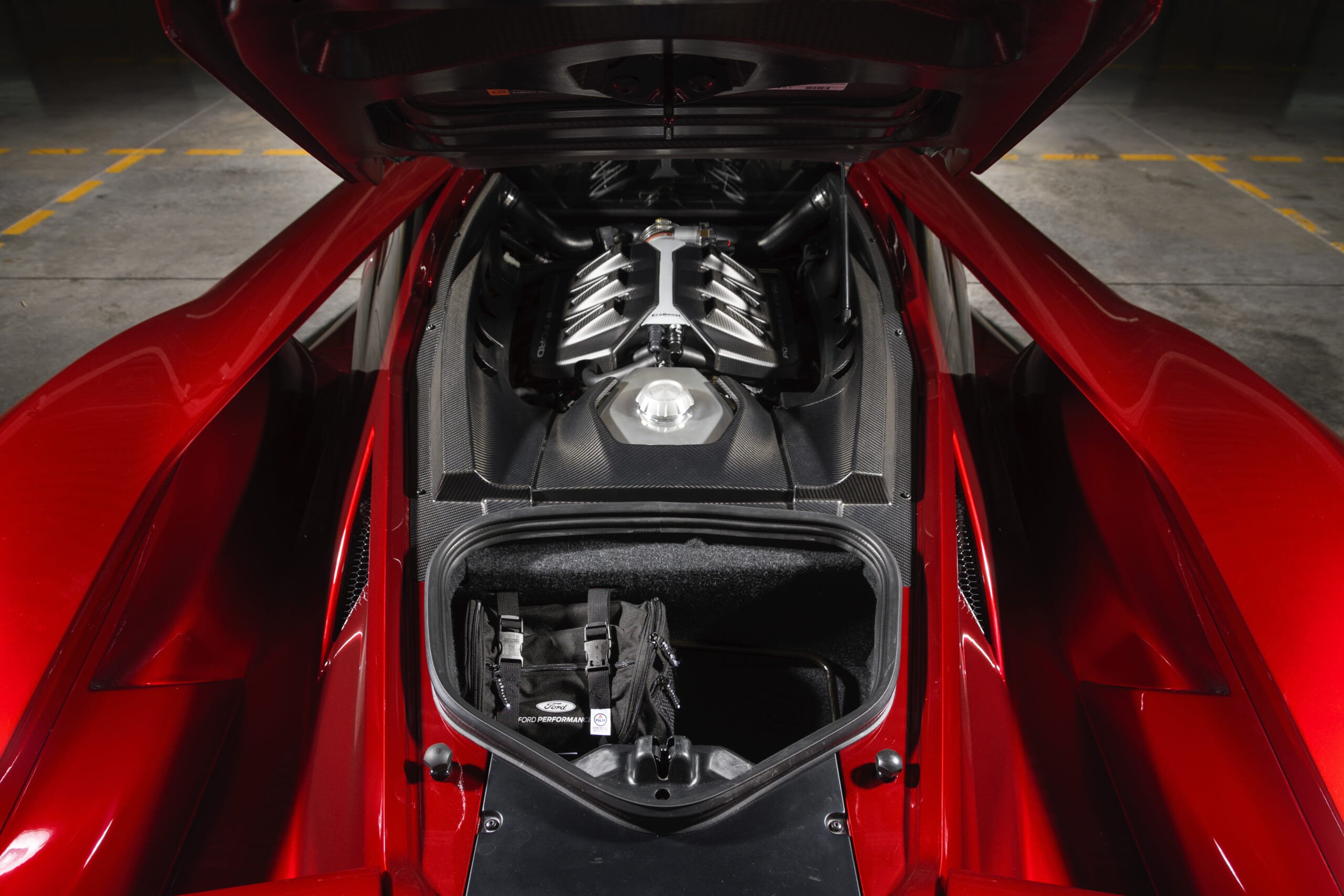6 Just-Revealed Secrets About the 2017 Ford GT, the Most Anticipated Supercar of the Decade
Listen up.

The 2017 Ford GT not a regular car. That much is obvious just by looking at it. In fact, it is one of the most hotly anticipated supercars to debut in recent years.
This is not only because of its zoomy styling, but also because Ford has kept most of the car’s technical details secret even though the GT was announced in January 2015 and raced as a production model in 2016.

But now, finally, Ford has let us get our hands on a GT and we can reveal all the long-awaited information on what makes this American supercar tick. Our behind-the-wheel driving impressions are embargoed for now, but we can spill everything on the car’s design and hardware.
The Ford GT could be the new zenith for automotive design. This isn’t only a tribute to its gorgeous lines, but also to the clever engineering embedded throughout the car that buries amazing features and technology.

1. Hidden Roll Cage
Consider the GT’s roll cage. All good race cars have one. Usually they loom beneath the car’s roof, crowding your headroom, their down tubes blocking the view out. They aren’t as inconvenient as say, the Dukes of Hazzard‘s ‘General Lee’s’ welded-shut doors, but they are an annoyance.
And if you do actually go to the track and put on a helmet, your new pumpkin-sized noggin will suddenly find the space occupied by the roll cage is exactly where it wants to be.

Ford’s engineers decided that GT drivers will not endure this hassle, because they embedded the steel roll cage required for racing into the car’s design, so the ultra-strong tubes are buried within the regular cabin trim, where they are out of sight and you won’t clock your helmeted head against them when sliding behind the wheel.

2. Lowrider Hydraulic Suspension
Yeah, we know that East L.A. lowriders love their hydraulic suspension, which lets the cars practically lie on the ground when stopped, glide the streets of the City of Angels at an unnaturally low altitude, and rise up when needed to get into driveways and climb over speed bumps.

The Ford GT faces a similar challenge because on the track the car hovers just 2.75 inches over the pavement when it attacks the racetrack. Just like those lowriders, that is too low for everyday street driving, so the GT uses hydraulic lifts in the suspension to boost it to a still-low 4.75 inches when it isn’t at the track.
These quick-acting hydraulics pop the car up with surprising vigor and suddenness. Alas, it isn’t quite quick enough to pop the car off the ground like the lowriders can do, but maybe that is just a matter of a little modification once owners get hold of the GT.

3. Coolant In The Flying Buttresses
The Ford GT has an exceptionally narrow cockpit that places the two occupants shoulder to shoulder sitting inside. The cabin tapers aggressively behind those seats, but looks somewhat conventional because of flying buttresses that flank the cockpit’s rear roof pillars.
These not only look cool, but they also help steer the air to optimize the GT’s aerodynamics. These functions are visible, but there’s another feature hidden inside. The rear fender pods contain the GT’s radiators and coolant flows between them and the engine through the buttresses, making them absolutely necessary items rather than the add-on details they appear to be.

4. Seats Don’t Adjust, The Pedals Come To You
We all know the ritual of getting into a new car: grab the release and slide the seat into position to suit your height. But not in racecars, whose chassis is shrink-wrapped around the engine, suspension and driver. In them, you adjust the pedals to meet the driver, and that’s just how it works in the GT.
The driver seat’s back is solid against the back wall of the cabin and the engine sits just on the other side of that divider.
So the GT has a handle down by the driver’s right calf. Pull it and spring pushes the pedal assembly forward. Use a foot on the brake pedal to position the pedals in the right place and release the handle to lock them into place.
In addition to the hidden roll cage and adjustable pedals, the GT is also built to accommodate a six-point racing seatbelt harness. All you need now is your helmet.

5. The Rear Wing Stows For 217 MPH Top Speed Runs
Wings make cars go faster, right? That’s why racecars have them, isn’t it? Erm, not really. What wings do is help stick cars to the ground because at high speed they are effectively low-flying airplanes. As with all airplanes, it is better to have wings than not.
But the thing is, wings increase drag, which slows the car down. Tearing around the curves of a racecourse, wings’ downforce increase grip for higher cornering speeds and quicker lap times. But absolute straight line top speed is penalized.

This is why Formula One race cars have a Drag Reduction System to flatten their wings for straight line passing moves.
So when the GT’s driver puts the car in V-Max mode (that’s engineering shorthand for ‘maximum velocity’), the GT stows its rear wing for reduced drag. It also switches the electronic stability control system to its highest sensitivity, so it can intervene if things start to go wrong in this less-stable, high-speed configuration. Which is good, since things can go wrong quickly at 217 mph.

6. It Drinks More Gas Than A Viper
The GT uses Ford’s much-hyped EcoBoost turbocharged 3.5-liter V6 engine, a fuel-saving engine much like the one in the F-150 pickup that Ford sells by the bushel. But the thing is that it isn’t possible to make the GT’s 647 horsepower without burning a lot of fuel, no matter what kind of engine does the burning.
So when a car gets in the neighborhood of the notorious fuel hog Dodge Viper‘s 645 horsepower, it doesn’t matter whether it uses the Viper’s monstrous 8.4-liter V10 or the GT’s 3.5-liter V6, it is going to gulp gas by the gallon.
In fact, the Viper beats the GT’s 11 mpg city and 18 mpg highway EPA ratings by 1 mile per gallon each.

These are some of the GT’s hidden secrets. We’ll fill you in on just how fast and awesome it is to drive in an upcoming story.
